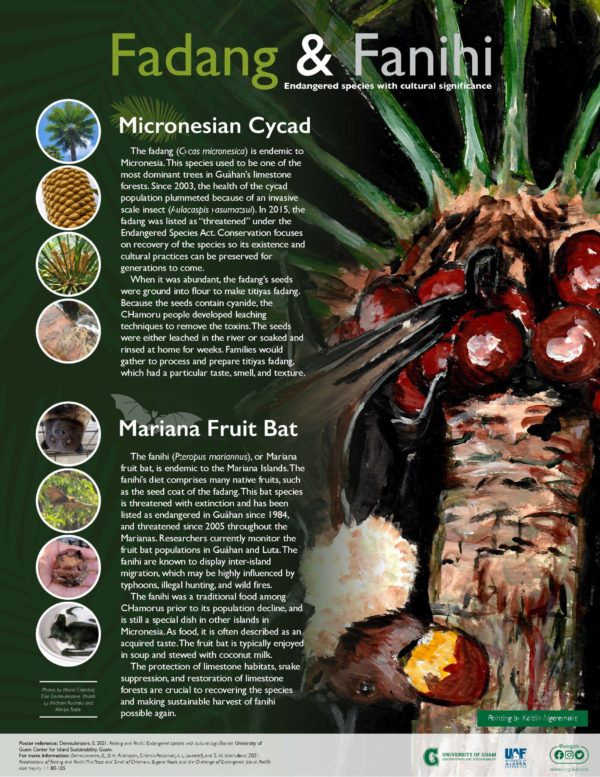Fadang and Fanihi: Endangered Species with Cultural Significance

Congrats to my PhD student Else Demeulenaere. Her recent paper in Pacific Asia Inquiry entitled Recollections of fadang and Fanihi: The Taste and Smell of CHamoru Bygone Foods and the Challenge of Endangered Island Species is gainging some traction and has been featured in a number of media outlets. The paper discusses two endemic species to Guam, the fadang and the fanihi, a cycad (Cycas micronesica) and a fruit bat (Pteropus mariannus), both of which are threatened with extinction. Both fadang and fanihi are traditionally eaten as food. Else conducted open-ended interviews allowing participants to tell their stories of taste and smell, and the interviewees share their recollections preparing and sharing endemic dishes like the titiyas fadang and kådu fanihi. Endangered species conservation can play a role in preserving these practices alongside their emphasis on biodiversity protection. Recovery plans, inclusive of traditional practices, can protect this biocultural diversity. A council of traditional and scientific knowledge holders, grounded in the CHamoru value system, can guide its implementation. Read the paper Demeulenaere, E., D. H. Rubinstein, S.Yamin-Pasternak, A. L. Lovecraft, and S. M. Ickert-Bond. 2021. Recollections of fadang and Fanihi: The Taste and Smell of CHamoru Bygone Foods and the Challenge of Endangered Island Species. Pacific Asia Inquiry 11: 80-105.

